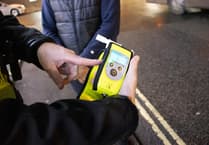EACH Tamar Valley line journey is worth £69 to the economy, equating to more than £13-million a year, according to a new study ‘Valuing the Tamar Valley Line’.
The £13-million total comes from considering a wide range of ways the railway contributes to the economy and society, including how much rail travellers spend on leisure and retail (£5.5-million), the Gross Domestic Product value of the employment of the line’s regular commuters (£2.6-million) and time and cost savings to passengers over other travel modes in taking the train (£1.5-million).
Among the many measures also included are the estimated £482,768 a year taken in rail fares and the value of employment from rail staff and the railway’s associated supply chain, estimated at £401,000.
The key figures have been split by county — the overall net value of the line in Devon is £6.5-million a year and £6.8-million in Cornwall.
‘Valuing the Tamar Valley Line’ looks at the line’s economic, social and environmental impacts and its findings come from considering a wealth of data, including surveys of rail passengers and a general travel survey conducted earlier in the year. The Department for Transport’s Transport Analysis Guidance (webTAG) standard valuation metrics have been used throughout.
Both the rail passengers and general travel surveys asked what improvements people would like to see to the train service. Both surveys found that people, including 48% of rail users surveyed, would like to see a later train from Plymouth, to allow people to spend an evening out in the city and still return home by train or to make later connections from other parts of the country.
Rail passengers in particular, 51% of respondents, also want to see a more frequent service on weekdays.
The study was the initiative of Cornwall Councillor for Gunnislake and Calstock Cllr Dorothy Kirk. It has been undertaken by public transport specialists the TAS Partnership on behalf of the Devon and Cornwall Rail Partnership.
Funding for the study has come from Cornwall Council, Cllr Kirk’s localities funding and also, through the rail partnership, the Designated Community Rail Development Fund, which is backed by the Department for Transport and the Association of Community Rail Partnerships.
Cllr Kirk said: ‘Our little railway, which must be one of the most beautiful to be found anywhere, is of vital importance to our communities, linking us with the rest of the world and providing access to employment, education, shopping and entertainment. This study has gone into great depth proving just how key the line is to the people of the valley and the economy. It thus helps make the case for the line’s improvement and development.’
Rail Partnership manager Richard Burningham said: ‘This is a really interesting study — the first anywhere that has looked at a rural line and sought to estimate the railway’s contribution in pretty much all ways to the communities it serves and the economy. It very much underlines the importance of the Tamar Valley Line.’
John Atkins, principal consultant of the TAS Partnership, who wrote the report, said: ‘This has been a unique opportunity for TAS to channel its powers of valuation and stakeholder engagement into measuring the impact that the railway brings to rural communities in the Tamar Valley. It demonstrates the wider importance of the railway, both now and in the future. Rail services can get overlooked or taken for granted — this study sets out the real value that is gained and also a wide range of multi-dimensional benefits beyond transport that cannot easily be measured. We hope the Tamar Valley Line continues to thrive.’
The Devon and Cornwall Rail Partnership is a non-profit partnership between local authorities, Plymouth University and the rail industry, which works to promote travel and seek improvements to services and facilities on the rural railways of the two counties.
Leading members include Cornwall Council, Devon County Council, Plymouth City Council and Great Western Railway.
The full report, including the results of the surveys, and also a summary, is available at www.tamarvalleystudy.com
Copies of the summary are also available at the Tamar Valley Centre in Drakewalls.




